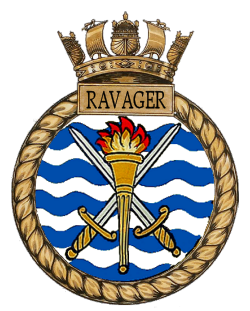
Page 1 of 2
Early days and working up
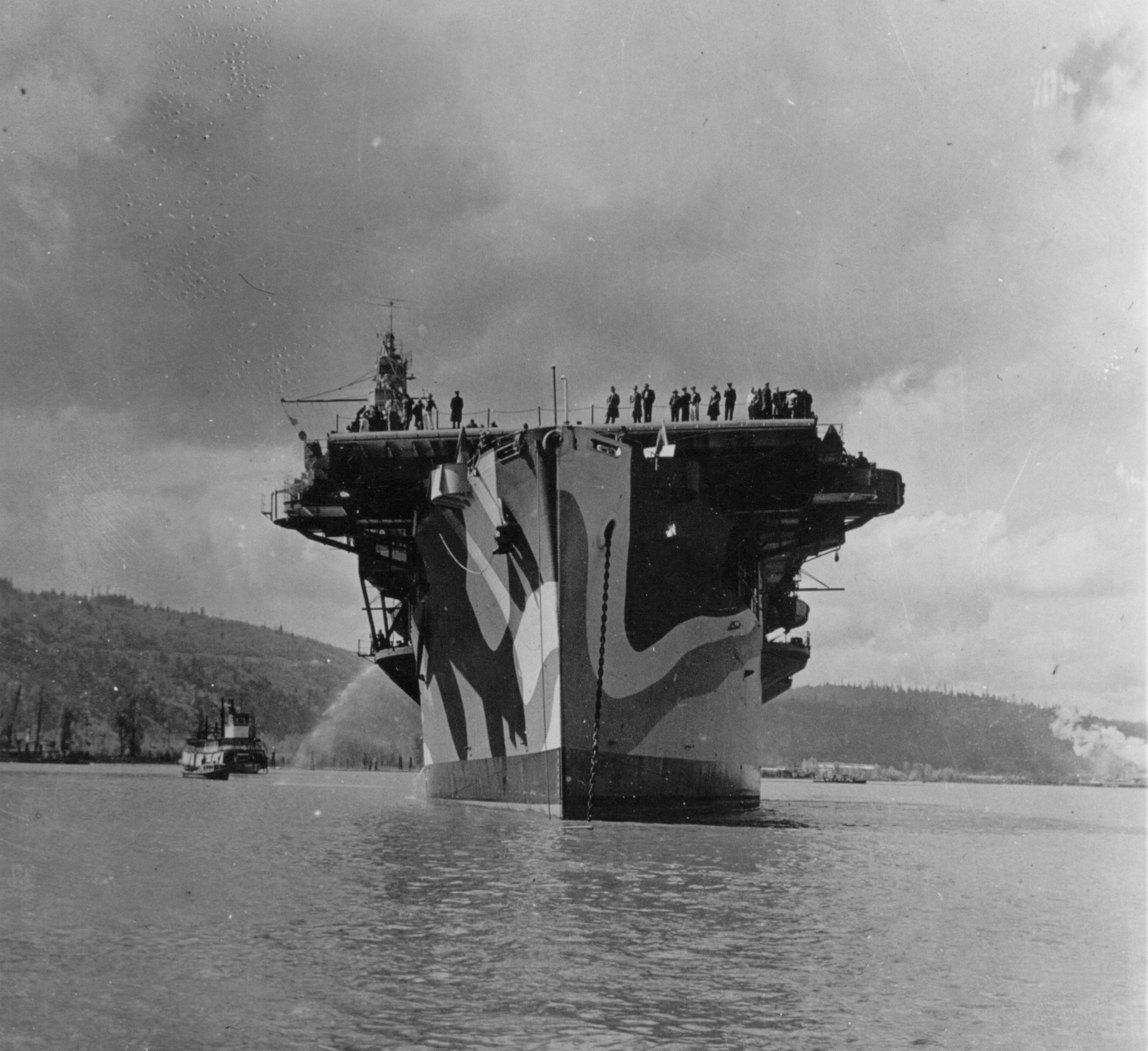 |
|
‡ April 9th
1943 - HMS Ravager on her builders trials in the Willamette River, Oregon .
Representatives from the Commercial Iron Works and the ship's company are on
the flight deck. |
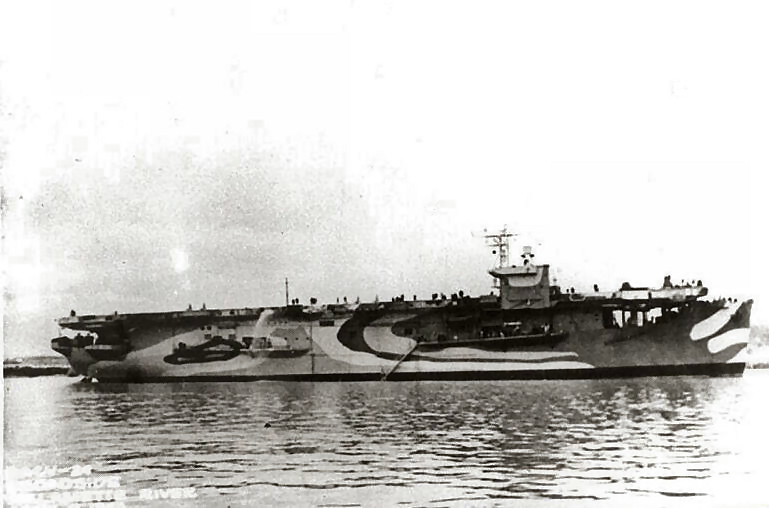 |
|
Starboard side view of Ravager as completed |
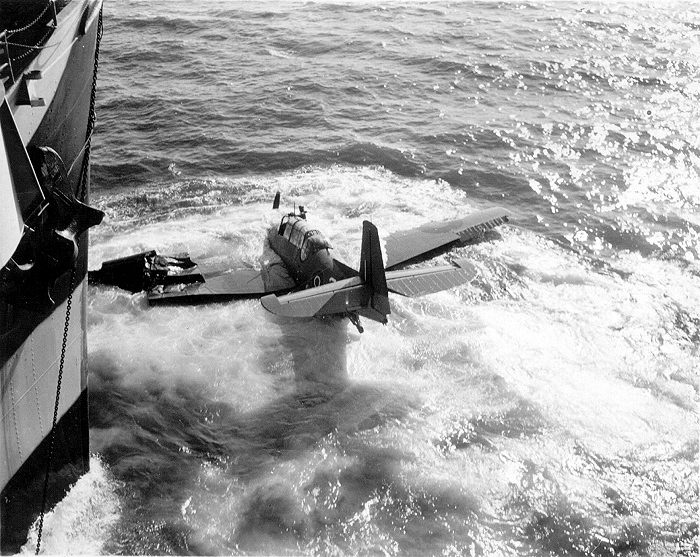 |
|
‡ One of four
Avenger aircraft of 846 Naval Air Squadron which ditched off the bows of HMS
Ravager in Chesapeake Bay during the flying work up period carried out in
the first two weeks of July 1943
|
Ship's Company
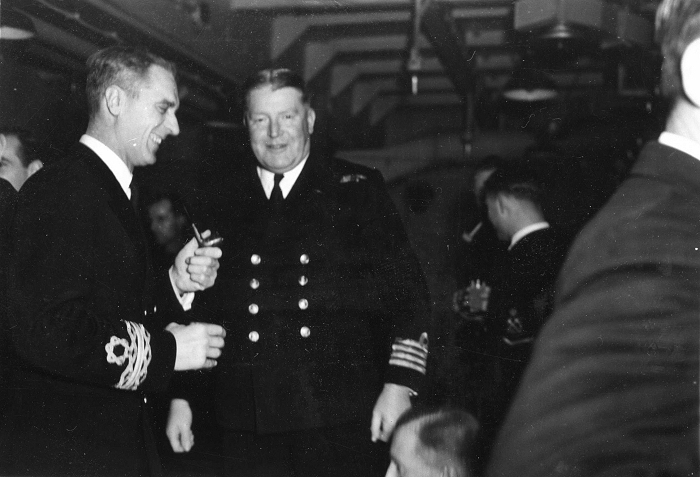 |
|
‡ Captain A. A.
Murray RN? commanding officer HMS Ravager and Commander ?? RNR |
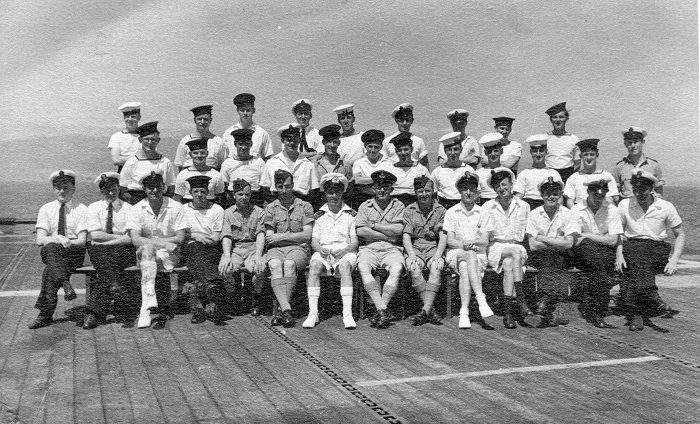 |
|
‡ Members of
the radio and radar departments |
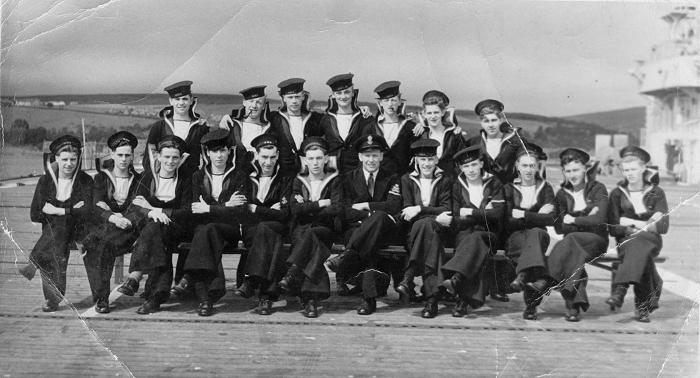 |
|
‡ Junior rates
of the radio and radar departments; Able Seaman Gordon Christie is seated
second from right |
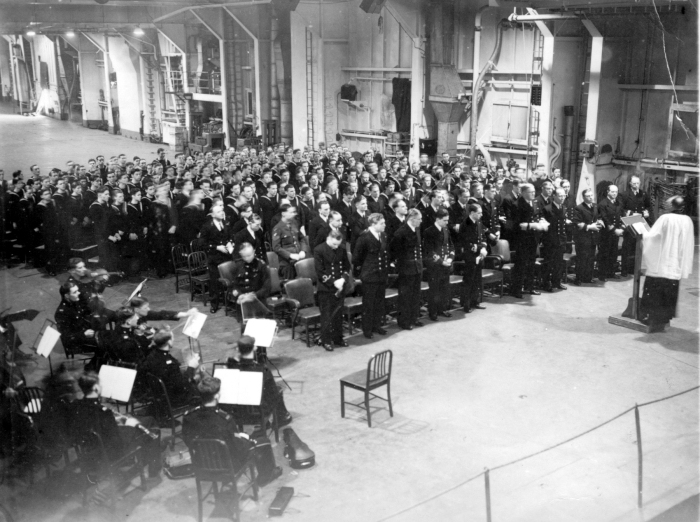 |
|
‡ Church service in
the hanger |
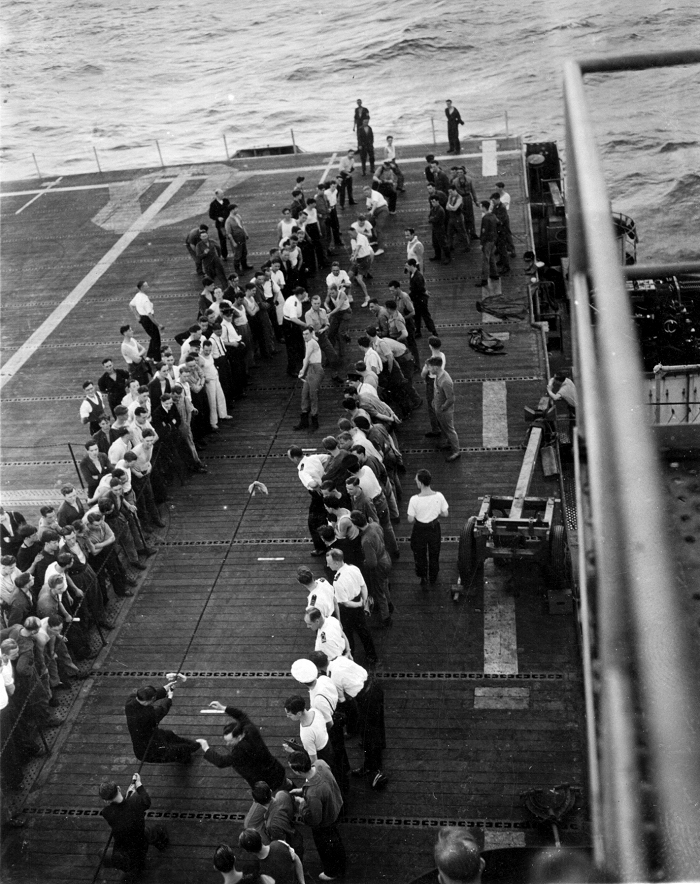 |
|
‡ A Tug-of War
competition held on the flight deck |
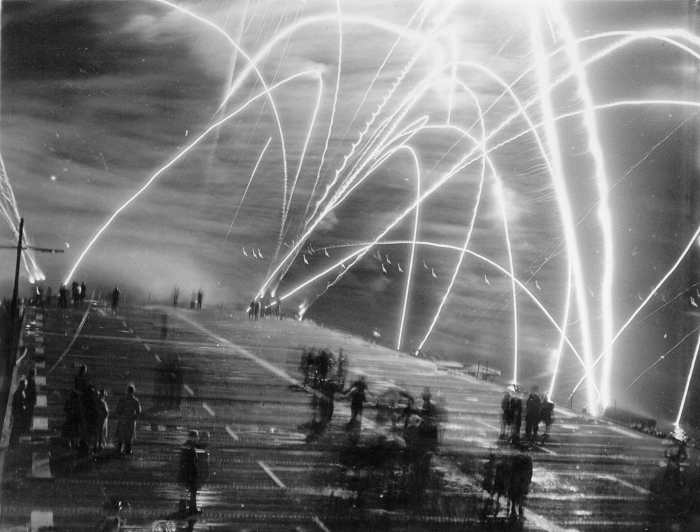 |
|
V-E Day celebrations |
At sea
The following four images show RAVAGER battling through
heavy seas
The following four images show RAVAGER at sea without
aircraft, probably on post refit trials off the Scottish coast.
The date is not certain but it is possibly Dec 1944 onwards as she has lost
her original paint scheme last pictured in Nov 1944 her pennant number 70 is
faintly visible
Deck Landing Training
HMS Ravagers primary role was to operate as a Deck Landing Training
carrier, providing a deck for a variety of training squadrons off the
Scottish coast. Training included visits from individual aircraft and
short detachments for more intensive training periods. Aircraft types
operated included Avenger, Barracuda, Corsair, Firefly, Fulmar, Hellcat, Sea
Hurricane, Seafire, Spitfire, Swordfish and Wildcat.
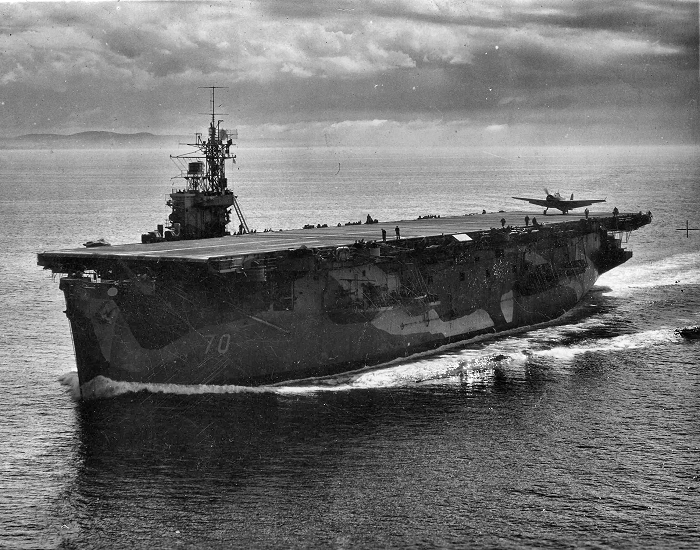 |
|
ῼ |
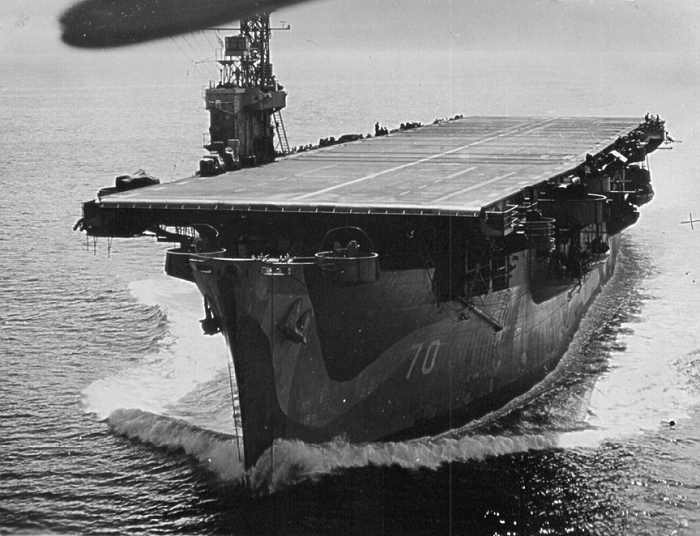 |
|
ῼ
|
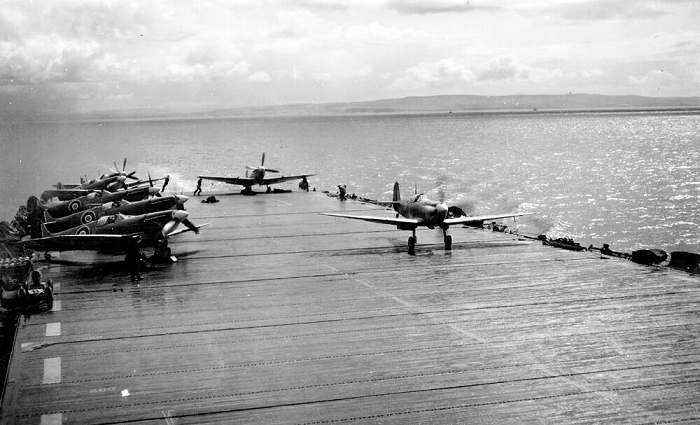 |
|
‡ A mix of hooked Spitfire Vbs
and Seafire LIIIs ranged on Ravager's flight deck as flying operations get
under way. The first to launch is already nearly half way down the deck with
a second running up its engine on the aft end. |
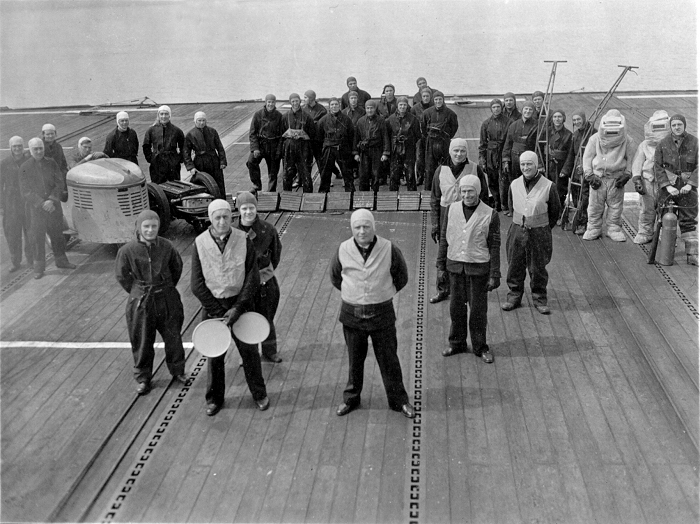 |
|
‡ The air department
flight deck personnel: In front are the DLCO (Deck Landing Control Officer)
known as 'Bata' and his team, behind them are the aircraft movements party,
from the far left these are flight deck tractor, aircraft starter trolley,
centre handlers and their chocks, far right manual aircraft starring arms
for manhandling aircraft on the deck, and the crash and fire crew with their
extinguishers and asbestos suits. |
Deck Landing Sequence
The four images below show a Hellcat coming in to land on Ravager, the DLCO
is signalling the pilot from behind the screen near the aft of the flight
deck. He uses his bats or paddles to signal (you can see his arm sticking
out in the first two shots) and only emerges once the aircraft is about to
touch down, Notice how the aircraft drifts to starboard as it nears the deck
after passing over the round-down and then corrects itself before touch
down.
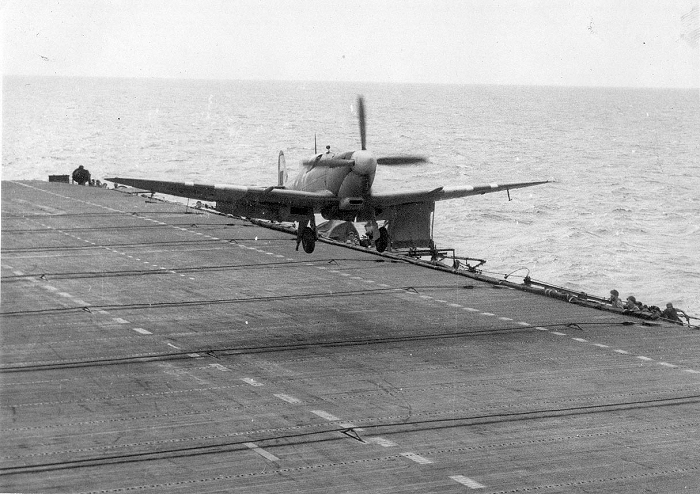 |
|
This Seafire may just make it as he sails over most of the eight arrestor
wires |
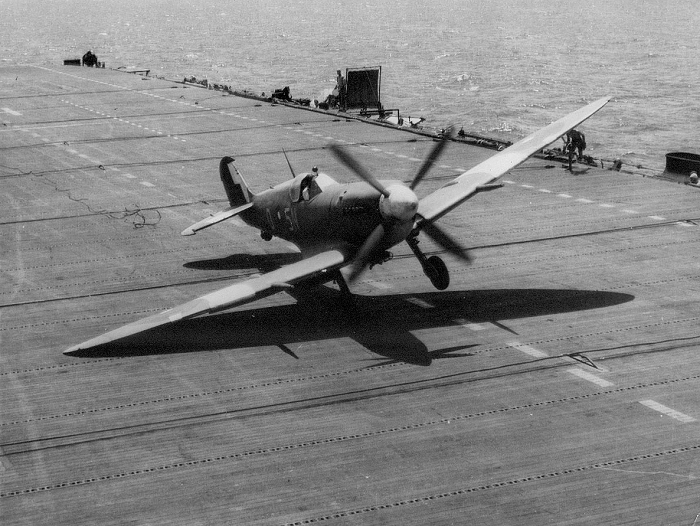 |
|
Although this pilot caught an arrestor wire cable has snapped and the
aircraft has lurched to starboard and will eventually end up in the
barriers.
|
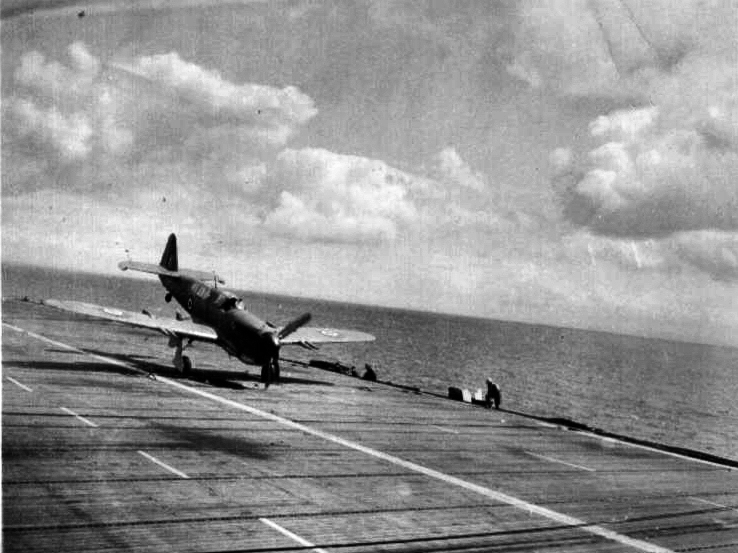 |
|
A firefly 'pecks' the deck - over doing the brakes results in the nose
pitching down and the propeller striking the deck. |
Image marked ‡ are
from the private collection of Mrs Rona Holmes, Rona's
father
JX/62602H Able Seaman
Gordon Christie served aboard HMS Ravager from December 1943
till January 1946
Image marked ῼ are from
the private collection of Mr. RJB Kenna; Ray's late father
Lt(E) CJ Kenna RNR served as an Engineer on H.M.S. Ravager
he also served on H.M. Ships 'Thane' and 'Tracker'.
Unless stated
otherwise all other images are from the Royal Navy Research
Archive collection
Page last edited:
10 May 2024
|